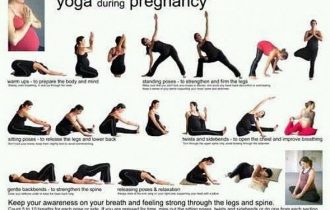Once a Cesarean is not Always a Cesarean
Priya’s heart was fluttering with euphoria as she had reached her third trimester of pregnancy. Although this was her second time, yet the feeling of bringing a new life to the world surpassed any other feeling. Friends and relatives, who were unaware so far, were becoming joyful to witness her growing belly and congratulated her.
Since she was well informed about the benefits of yoga in the pregnant woman’s life, she had got associated with P101 in her 2nd trimester itself. In her class, she always held her head high in confidence as if she knew almost everything about child birth; in fact, she used to comfort other expecting women. However, her confidence stumbled when one fine day somebody enquired her about her consideration for VBAC or TOLAC. These were unprecedented terms for her to which shecouldn’t respond. She decided to contact her child birth educator at P101. She knew this was the right place to receive accurate information regarding these terms.

Her childbirth educator calmed her down and then apprised her of that VBAC stands for Vaginal Birth after Cesarean and TOLAC stands for Trial of labor after Cesarean. Both of them mean that one can attempt vaginal birth /normal birth even though one has had a prior history of a c-section. Hearing this, Priya’s mind was in a tiff andher shackles of myths broke down which she had heard from people around her that once a cesarean is always a cesarean.

To this the P101 childbirth educator informed her overwhelmingly that 80% of the mothers deliver naturally when they attempt VBAC. Moreover, she recommended that Priya should also consider opting for VBAC because of the numerous benefits for the bodies of mother and baby. She further annotated these advantages in detail to her which are as follows:
- A baby born vaginally picks up the healthy bacteria and yeast from the mother’s birth canal which enters the baby’s gut and initiates the digestive system with the right bacterial probiotics.
- Babies born vaginally are less likely to develop obesity, diabetes, allergies, etc later in life.
- Mother and baby separation after the parturition is diminutive which helps establish breastfeed properly.
- Recovery time for a normal birth is less than a cesarean birth. Thus, a mother with a VBAC can start with her routinely chores sooner as compared to a mother after a cesarean birth.
- A VBAC allows the mother to refrain from the potential risks associated with an abdominal surgery.
- Most importantly, to experience the feeling of contentment after a vaginal delivery.
Priya acknowledged the positives of VBAC. Nevertheless, she was perturbed that her uterine scar might rupture during labor creating a complicated situation. To which the childbirth educator pacified her by saying that the uterus or scar rupture occurs in less than 1% of women.
Another yet last question flooding in her mind was that how she could increase her chances of a VBAC. The childbirth educator directed her furtherby explaining her that
- She must choose a doctor who favours VBAC and also a hospital which is well equipped in case of an emergency.
- She must maintain a healthy and balanced diet to avoid excessive weight gain.
- She must maintain her daily routine of yoga or light prenatal exercises.
- She should not fall under the same condition that occurred during her first pregnancy due to which she had to opt for a cesarean birth.
- She should let labor begin on its own, vis avoid induction of labor if feasible.
All the information providedto her and even the mental support that Priya gained at the P101 center assured her and bestowed her confidence that she should consider a VBAC delivery.
Learn more about pregnancy, baby care & breastfeed related information and pregnancy classes visit our website Rita’s Pregnancy 101





